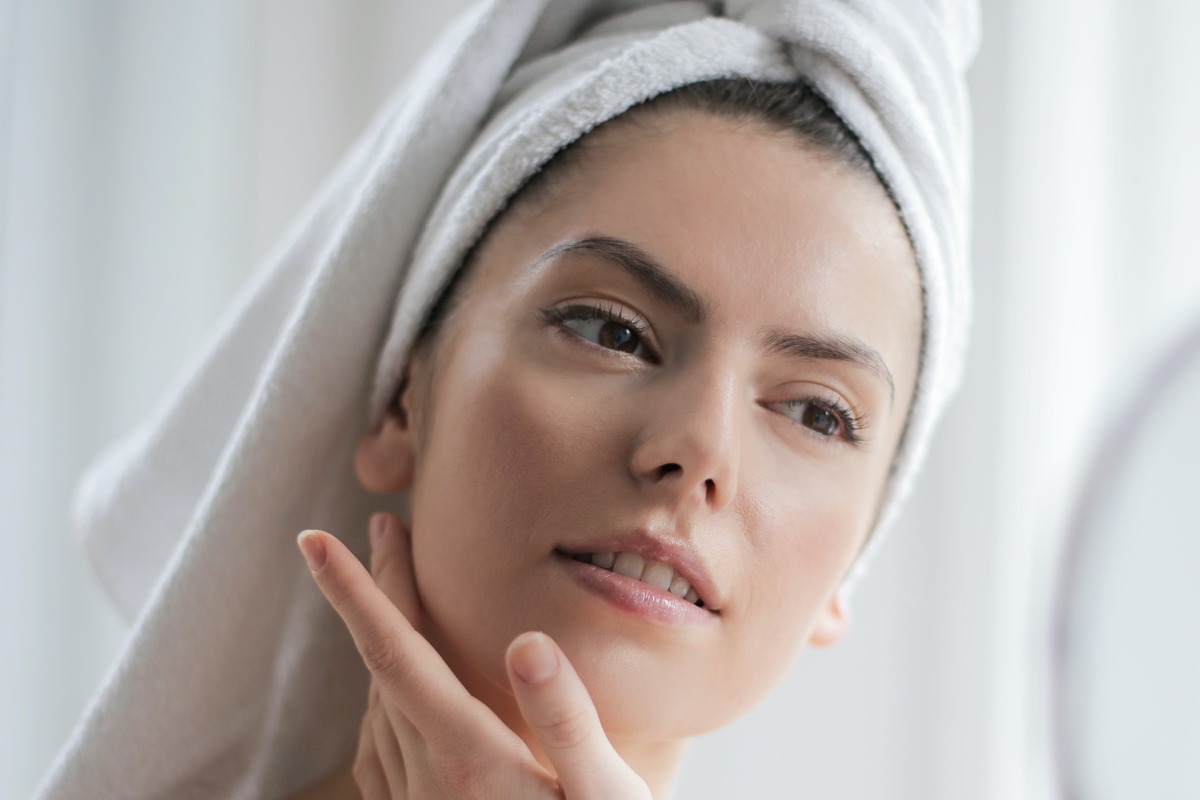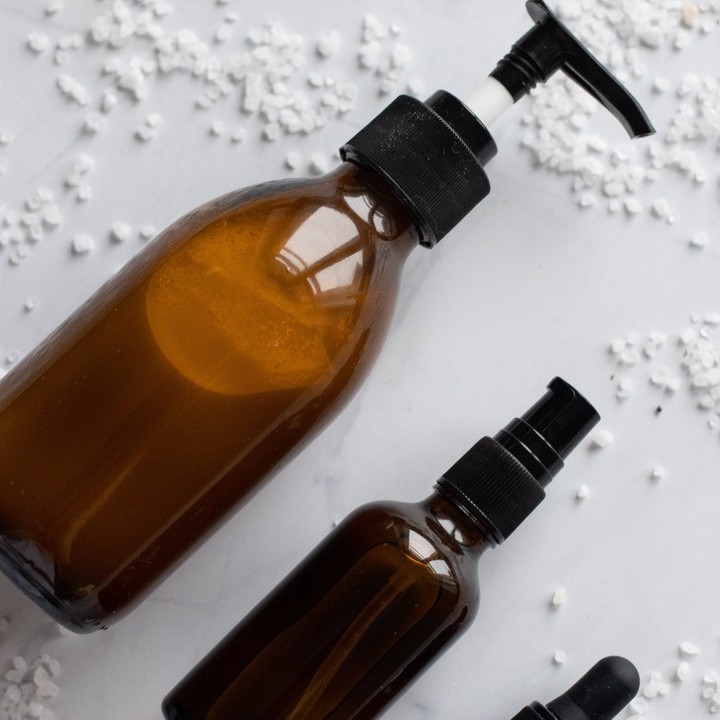
Oily Skin: Proper Oily Skin Care Routine
Oily Skin: Proper Oily Skin Care Routine
Oily skin is a common dermatological concern that affects individuals of all ages. Characterized by an excess production of sebum, the skin's natural oil, it can lead to enlarged pores, acne, and a persistent shiny appearance. While oily skin can be frustrating, understanding its causes and implementing an effective skincare routine can help manage and balance oil production. In this comprehensive guide, we'll explore the factors contributing to oily skin, essential skincare practices, and recommended products to keep your skin healthy and radiant.
Understanding Oily Skin: Signs, Symptoms, and Self-Assessment
Determining your skin type is a crucial step in establishing an effective skincare routine. Among the various skin types, oily skin is characterized by an overproduction of sebum, the skin's natural oil. Recognizing the signs and symptoms of oily skin is essential for tailoring your skincare regimen to address its specific needs. In this guide, we'll explore how to identify if your skin is oily and offer insights into managing and caring for oily skin.
Common Signs of Oily Skin:
- Shiny Appearance: One of the most noticeable signs of oily skin is a persistent shiny or greasy appearance. This shine is caused by an excess of sebum on the skin's surface.
- Enlarged Pores: Oily skin often accompanies enlarged pores. The increased production of sebum can cause pores to become clogged and appear larger than those on drier skin types.
- Acne and Blackheads: The excess oil on the skin can contribute to the development of acne and blackheads. Oily skin is more prone to these blemishes due to the increased likelihood of pores becoming clogged with oil and dead skin cells.
- Makeup Doesn't Stay Put: If you find that your makeup tends to slide off or doesn't stay in place throughout the day, it could be an indication of oily skin. The excess oil can affect the adherence to makeup products.
- Midday Shine: Oily skin tends to become shinier as the day progresses. If you notice an increase in shine,
especially in the T-zone (forehead, nose, and chin), it's likely that you have oily skin.
Simple Tests to Determine Oily Skin:
While these signs provide a good indication of oily skin, there are also simple tests you can perform at home to get a better understanding:
- Blotting Paper Test:
Gently press a blotting paper or tissue against different areas of your face, especially the forehead, nose, and chin. If the paper shows oil spots or appears translucent, it suggests that your skin is producing excess oil.
- Morning Inspection:
Observe your skin in the morning after waking up. If you notice a shiny or greasy appearance, it indicates that your skin produces oil overnight.
- Reaction to Products:
Pay attention to how your skin reacts to skincare products. If you find that your skin often feels greasy or experiences breakouts after using certain products, it could be a sign that your skin is oily.
- Observation Throughout the Day:
Monitor your skin's condition at different times during the day. If you consistently experience increased shine and
oiliness, especially in the T-zone, your skin is likely oily.
Understanding Oily Skin: Causes and Factors
Oily skin is primarily a result of the overproduction of sebum by the sebaceous glands. Several factors contribute to this phenomenon:
- Genetics: Genetics plays a significant role in determining skin type. If oily skin runs in your family, you may be genetically predisposed to higher sebum production.
- Hormonal Changes: Hormonal fluctuations, especially during adolescence, pregnancy, and menstruation, can trigger an increase in oil production. Hormones like androgens stimulate the sebaceous glands, leading to excess sebum.
- Climate and Environment: Hot and humid weather can stimulate oil glands, leading to increased sebum production. Environmental factors like pollution and exposure to certain chemicals may also influence oily skin.
- Overwashing and Harsh Products: Paradoxically, over-cleansing the skin or using harsh products can strip away too much oil, prompting the skin to compensate by producing even more. This can exacerbate the problem.
- Diet: While more research is needed, some studies suggest a link between diet and skin health. Consuming a diet high in certain fats and sugars may contribute to oiliness.
Effective Oily Skin Care:
Once you've determined that you have oily skin, the next step is to establish a skincare routine tailored to its specific needs. While it may be tempting to use aggressive products to strip away oil, an effective oily skin care routine involves a delicate balance. The goal is not to eliminate all oil but to manage it and maintain healthy skin. Here are essential steps to include in your routine:
- Gentle Cleansing: Use a mild, foaming cleanser to remove excess oil, dirt, and makeup. Harsh cleansers can strip the skin of essential moisture, leading to increased oil production. You can choose CeraVe Foaming Cleanser for Normal to Oily Skin | 473ml
- Exfoliation: Regular exfoliation helps remove dead skin cells that can contribute to clogged pores and acne. Opt for a chemical exfoliant containing ingredients like salicylic acid or glycolic acid for a gentler approach.
- Hydration: Even oily skin needs hydration. Choose oil-free, non-comedogenic moisturizers to maintain skin health. Dehydrated skin can trigger an overproduction of oil as the skin tries to compensate for the lack of moisture.
- Sunscreen: Sun protection is crucial for all skin types. Use a broad-spectrum sunscreen with an SPF of at least 30, preferably one designed for oily or acne-prone skin.
- Treatment Products: Incorporate targeted treatments into your routine, such as products containing niacinamide or retinoids. These can help regulate oil production and improve skin texture.
- Balanced Diet: While more research is needed, maintaining a balanced diet with plenty of fruits, vegetables, and water is generally beneficial for overall skin health.
Recommended Products for Oily Skin
Navigating Oily Skin: Choosing Effective Treatment Products
Oily skin requires a thoughtful and targeted approach to skincare. Incorporating the right treatment products into your routine can help regulate oil production, prevent breakouts, and promote a smoother complexion. In this guide, we'll explore some key treatment products specifically designed for oily skin and how they can contribute to a balanced and healthy complexion.
1. Salicylic Acid-Based Products:
Salicylic acid is a beta-hydroxy acid renowned for its effectiveness in managing oily skin. This ingredient penetrates the pores, exfoliating both the skin's surface and within the pore lining. By doing so, salicylic acid helps to remove excess oil, dead skin cells, and debris that can contribute to acne and enlarged pores. Look for cleansers, toners, or spot treatments containing salicylic acid as a primary ingredient for targeted treatment. You can choose Cerave Acne Control Cleanser |237 ml
2. Niacinamide (Vitamin B3):
Niacinamide is a versatile and well-tolerated ingredient known for its ability to regulate sebum production. It helps to balance oiliness without causing excessive dryness. Niacinamide is also celebrated for its anti-inflammatory properties, making it beneficial for those with acne-prone oily skin. Incorporate niacinamide into your routine through serums or moisturizers for a multifaceted approach to oil control.
3. Retinoids:
Retinoids, derivatives of vitamin A, are potent agents in promoting skin renewal and regulating oil production. They work by encouraging cell turnover, preventing the pores from becoming clogged with dead skin cells and excess oil. While retinoids are powerful, they may cause dryness or irritation initially. Start with lower concentrations and gradually increase as your skin builds tolerance. Nighttime application of retinoid creams or serums can be particularly effective.
4. Oil-Free Moisturizers:
Contrary to a common misconception, oily skin still requires hydration. Opt for oil-free, non-comedogenic moisturizers that provide the necessary hydration without clogging pores. Gel-based moisturizers are often well-received by oily skin types, as they are lightweight and absorb quickly.
5. Clay Masks:
Clay masks can be valuable additions to an oily skincare routine. Ingredients like kaolin or bentonite clay help absorb excess oil and impurities, leaving the skin feeling refreshed. Incorporate a clay mask into your routine once or twice a week to help control oiliness and minimize the appearance of pores.
6. Mattifying Primers:
For those who wear makeup, incorporating a mattifying primer into your routine can be a game-changer. These primers create a smooth canvas for makeup application while helping to control shine throughout the day. Look for formulations specifically designed for oily or combination skin.
7. Hyaluronic Acid Serums:
While it may seem counterintuitive to use a hydrating product for oily skin, hyaluronic acid serums can provide lightweight and effective hydration. Hyaluronic acid attracts and retains moisture without adding heaviness or clogging pores. This can help balance the skin's hydration levels and reduce the likelihood of increased oil production as a compensatory mechanism.
8. Oil-Control Cleansers:
Incorporate cleansers specifically formulated for oily skin into your daily routine. These cleansers typically contain ingredients that help control oil without over-drying the skin. Avoid harsh or abrasive cleansers, as they can strip away too much oil, prompting the skin to produce even more.
Managing oily skin requires a holistic approach that addresses both the internal and external factors influencing oil production. Understanding the causes of oily skin, implementing a proper skincare routine, and choosing suitable products can contribute to a healthier complexion. Remember that consistency is key, and it may take time to find the perfect routine for your skin. If you have persistent concerns or severe acne, consulting with a dermatologist can provide personalized guidance for your skincare journey. With the right care, you can achieve a balanced and radiant complexion, even with oily skin.
 العربية
العربية





